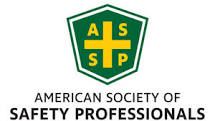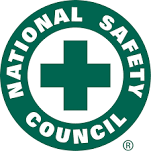Lack of hazardous energy control safeguards results in Tragedy | FIRST, VERIFY
Two workers at a federal healthcare facility suffered fatal injuries caused by hot steam after a metal fixture on a main steam line blew off. The workers had just finished making repairs to the steam pipe within the facility.
A U.S. Department of Labor Occupational Safety and Health Administration inspection determined that the said facility had failed to protect employees from struck-by and burn hazards and the agency identified numerous deficiencies in the facility’s lockout/tagout program. One of the workers was an employee of the federal healthcare facility and the other was an employee of a third-party contractor.
“These fatalities could have been prevented if the employer had complied with safety standards that are designed to prevent the uncontrolled release of steam,” said OSHA’s local Area Director “Tragically, these well-known protective measures were not in place and two workers needlessly lost their lives.”
OSHA also found that the healthcare facility had failed to:
- Properly shutdown to avoid additional or increased hazard(s) to employees.
- Relieve or render safe all potentially hazardous residual energy such as condensate water.
- Maintain adequate procedures for isolating each steam main branch supplying campus buildings.
- Conduct a periodic inspection of all lockout-tagout procedures to correct any deviations or inadequacies.
- Provide adequate training to supervisory employees.
- Retrain employees when there was a change in their job assignments, or a change in machines, equipment or processes that presented a new hazard.
- Notify affected employees of the application and removal of lockout or tagout devices.
- Inform the third-party contractor of its lockout/tagout procedures.
- Ensure each authorized employee affix a personal lockout or tagout device to the group lockout device before working on the machine or equipment.
OSHA issued nine notices of unsafe and unhealthful working conditions to the federal facility for one willful, three repeat and five serious violations. Under Executive Order 12196, federal agencies must comply with the same safety and health standards as private sector employers covered under the OSH Act. The federal agency equivalent to a private sector citation is the Notice of Unsafe and Unhealthful Working Conditions.
The federal facility has 15 business days from receipt of the notices to comply, request an informal conference with OSHA’s area director or appeal the notices by submitting a summary of the agency’s position on the unresolved issues to OSHA’s regional administrator. OSHA cannot propose monetary penalties against another federal agency for failure to comply with OSHA standards. If the federal facility had been a private sector employer, the total penalty amount would be $621,218.
OSHA cited the third-party contractor for four serious violations with $38,228 in proposed penalties for failing to:
- Develop, document and use lockout/tagout procedures for the control of potentially hazardous energy.
- Adequately train employees on the methods necessary to isolate and control energy.
- Inform the federal facility of the contractor’s lockout/tagout procedures.
- Ensure that each authorized employee affixed a personal lockout or tagout device to the group lockout device.
The said contractor had 15 business days from receipt of its citations and penalties to comply, request an informal conference with OSHA’s area director or contest the findings before the independent Occupational Safety and Health Review Commission.
Under the Occupational Safety and Health Act of 1970, employers are responsible for providing safe and healthful workplaces for their employees. OSHA’s role is to help ensure these conditions for America’s workers by setting and enforcing standards, and providing training, education and assistance under the Occupational Safety and Health Act.
There are a few essential to-dos that any organization can follow to avoid citations and penalties like the one stated above. One is conducting basic safety checks once a week at their workplace. A good tool to use could be a safety checklist like the Construction Safety Inspection Checklist that you can tick as you go around inspecting your workplace.
Numerous organizations throughout North America rely on FIRST, VERIFY’s Online Safety Orientation to deliver safety preparedness to their workforce and help avoid OSHA violations and citations. You could be one of them too.
You might also like






